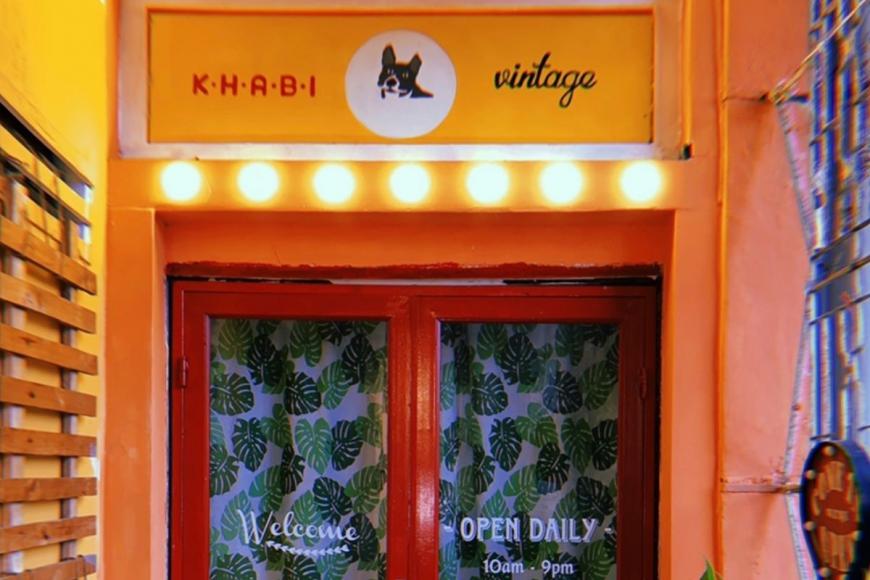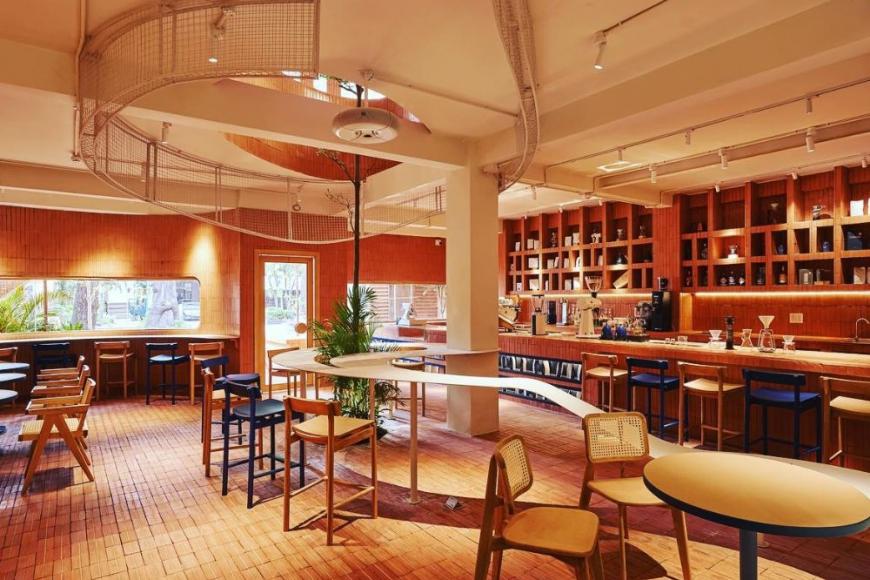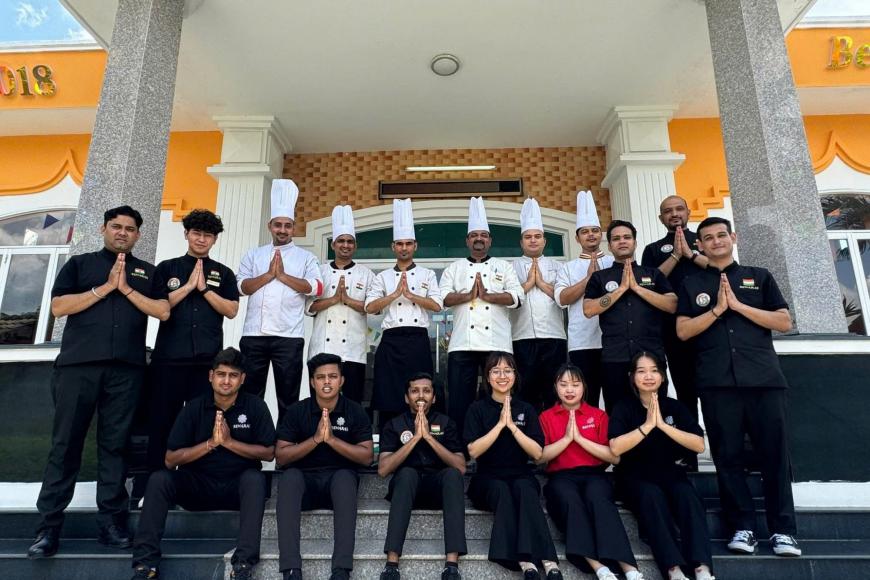- Nha Trang Travel Information
- Muine Travel Information
- Hue Travel information
- Cantho travel information
- Sapa travel information
- Ha Giang Travel Guide
- Ninh Binh Travel Information
- Quy Nhon Travel Information
- Vietnam Travel Information
- Hoian Travel Guide
- Vung Tau Travel Information
- Quang Binh Travel Information
- Phu Quoc Travel Information
- Ha Tinh Information
- Ca Mau information
- Quang Ninh Travel Information
- Tay Ninh Travel information
- Hoian travel guide
- Tien Giang travel guide
- Con Dao Travel information
- Ninh Thuan information
- Moc Chau information
- Danang Vietnam Travel Information
- Hanoi Travel Information
- Ho Chi Minh Travel Information
- Dalat Travel Information
Things To Do In Chinatown Saigon
Situated in Ho Chi Minh City, Chinatown Saigon (Chợ Lớn) is widely recognised as one of the most prominent and largest Chinatowns, boasting a rich and dynamic history. The charm of antiquity and modernity may be seen in this location, which features traditional markets and local street food.
This essay will take you on a tour of Cho Lon, covering things to do in Chinatown Saigon, so that you may comprehend the reasons behind the popularity of Chinatown Saigon. It's time to get started!
Chinatown Saigon About
It is believed that Cho Lon's emergence was closely connected to the Hoa people, who are considered to be overseas Chinese. The Hoa people's historical migration to Vietnam dates back to the collapse of the Ming dynasty in 1644. As a result of subsequent political crises in China over the course of several years, the number of Hoa people in Vietnam gradually increased, eventually transforming into a fully-fledged diaspora. This diaspora is currently comprised of five distinct groups: the Cantonese and the Hakka, who hail from Guangdong province; the Chaozhou, who hail from eastern Guangdong province; the Fujianese, who hail from Fujian; and the Hainanese, who hail from the island that is the most southernmost of the group.
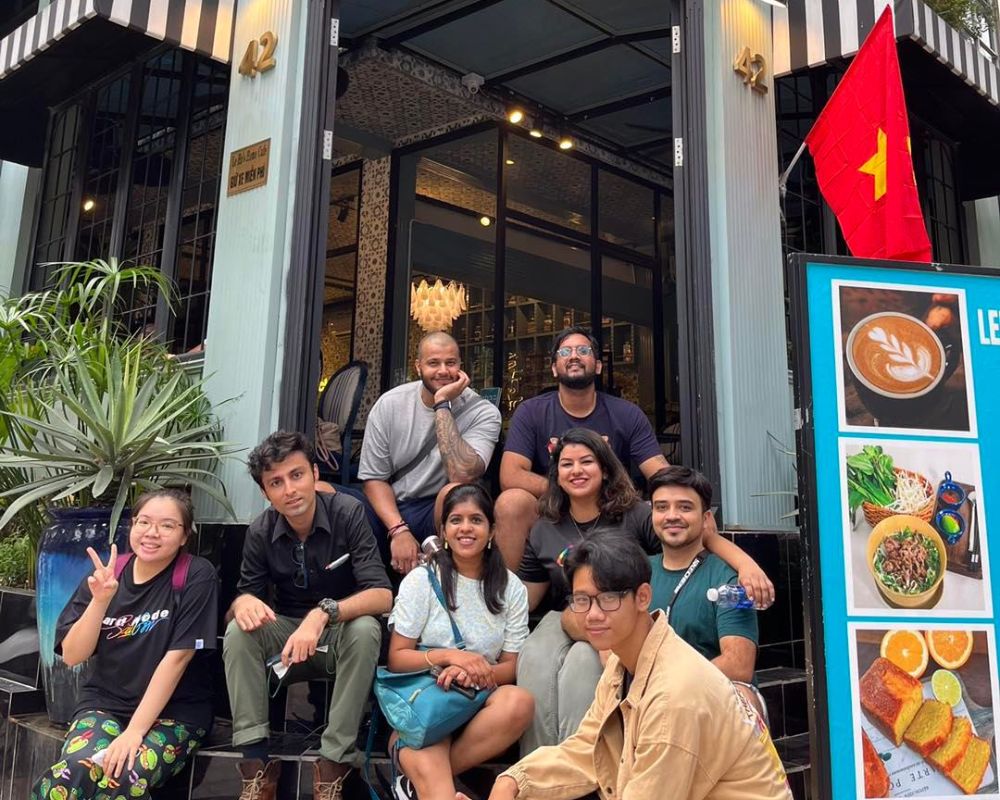
Over the course of the Tay Son rebellion, which was a huge peasant uprising against the reigning Nguyen dynasty in Southern Vietnam, Cho Lon originally came into being in 1779. This rebellion occurred around the same time. Those ethnic Chinese people who supported the Nguyen dynasty were forced to depart Bien Hoa and the neighbouring towns because they were afraid of being punished for their support of the Nguyen dynasty. They made their home at Cho Lon, which literally translates to "big market." Cho Lon continued to function as a city in its own right and a significant commercial centre until 1932, when it was transformed into Saigon, which was rapidly urbanising at the time.
Cho Lon became infamous as a black market for American soldiers selling supplies issued by the American Army during the Vietnam War. Additionally, Cho Lon was bombed during the first few days of the Tet offensive, which increased its level of controversy. To our great good fortune, the majority of the well-known pagodas and traditional Chinese architecture have been preserved. A large number of Hoa people left their homeland in the late 1970s as a direct result of the Sino-Vietnamese war and the subsequent anti-Chinese response. The shops and traditions of Cho Lon have endured the test of time, and the area continues to thrive despite the fact that its history has been a complete and utter mess.
Top Things To Do In Chinatown Saigon
Visit Binh Tay Market
- Address: 57A Thap Muoi, Ward 2, District 6, Ho Chi Minh City
One of the things to do in Chanatown Saigon is to visit Binh Tay Market. Cho Lon's Binh Tay Market may be found right in the middle of the city. In the late 1880s, Quach Dam, who was considered to be one of the wealthiest landlords in China, was the one who founded this market. Among the many fascinating aspects of the architecture of the Binh Tay market is the fact that it combines French forms with traditional motifs that are associated with Chinese culture. In addition to its fascinating culture and one-of-a-kind history, Binh Tan Market is a place where you can get culinary delights from both China and Vietnam.
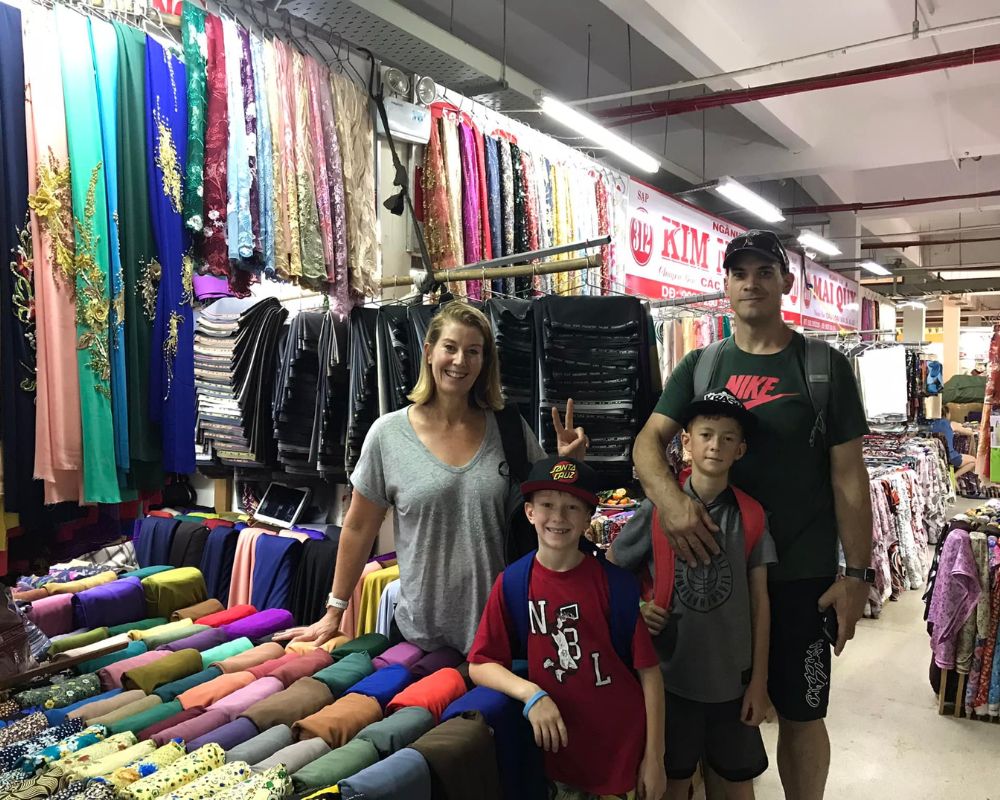
It is certain that you will find yourself at Binh Tay Market if you are looking for exceptional regional cuisine. In particular, this is the most popular breakfast spot in Chinatown Saigon, which features a large number of food vendors that are owned by locals. The restaurant offers a variety of delectable delicacies that are reminiscent of the countryside, like Chinese roasted duck, Com Tam (Steamed Broken Rice), Pha Lau (Beef Offal), Goi Cuon (Spring Rolls), and Com Ga (Chicken Rice), among others.
Go to Thien Hau Temple
- Address: 710 Nguyễn Trãi, Phường 11, Quận 5, Thành phố Hồ Chí Minh
The most notable location in Saigon that represents the religious life of the Chinese people is Chinatown, which is filled with pagodas and temples. It was in the year 1760 that the Cantonese community established the Thien Hau Temple. Consequently, the architectural design for both the exterior and the inside is infused with a typical Chinese atmosphere.
The fact that this temple has been around for such a long time and is also considered to be the most impressive destination for tourists is a source of great pride. In particular, every nook and cranny of the temple possesses its own unique beauty that "hypnotises" each and every visitor.
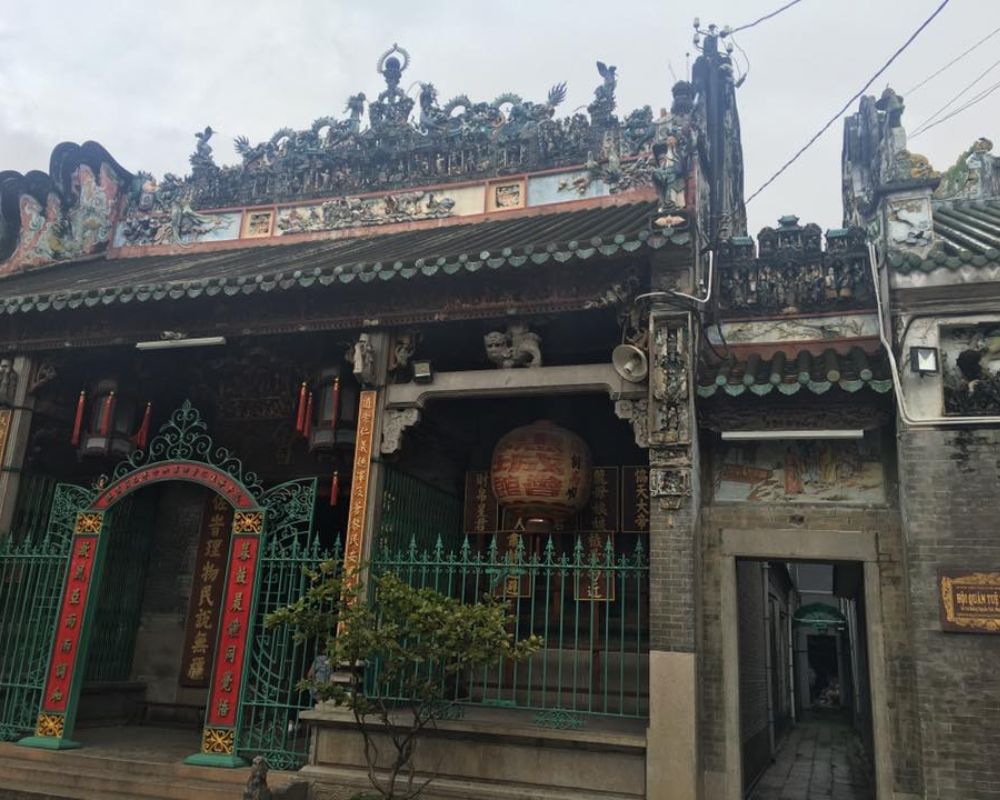
Numerous individuals are under the impression that the Thien Hau Pagoda is a location where they can pray for good fortune. This means that once you arrive, you will have the opportunity to learn how to pray or to write down your wishes on paper and then hang them with a ring in order to ask for good fortune.
Discover Phuoc An Hoi Quan Pagoda
- Address: 184 Hùng Vương, Phường 12, Quận 5, Thành phố Hồ Chí Minh
During the reign of Gia Khanh, 1893 saw the construction of Tam Son Hoi Quan. Temples, churches, and pagodas are some of the numerous religious structures that may be found in the area surrounding Tam Son Hoi Quan. Every single one of them owns the identity that sets them apart from the rest. You will experience a sense of calm and tranquility when you set foot in this location.
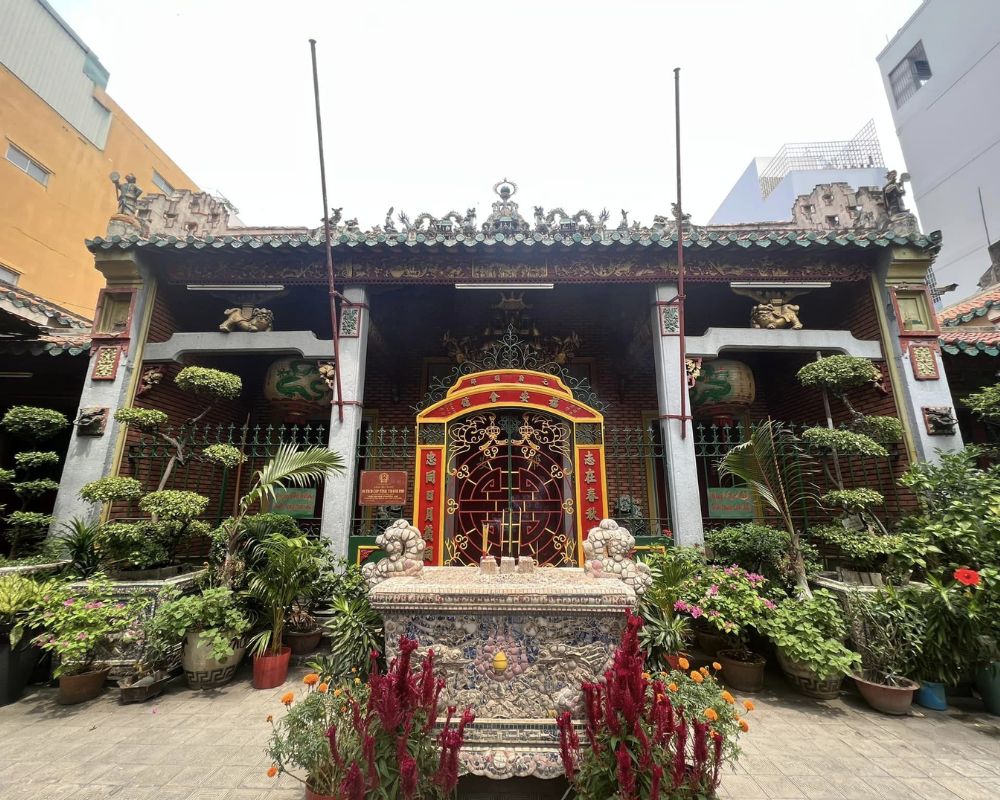
The following are just a few examples of the excellent places that can be found in Chinatown Saigon that you can visit. In addition, if you want to experience the "specialty" of Saigon, you can explore the city at night.
Explore Chua Ong Bon Pagoda
- Address: 264 Đ. Hải Thượng Lãn Ông, Phường 14, Quận 5, Thành phố Hồ Chí Minh
The Chua Ong Bon Pagoda is the oldest Chinese pagoda in Ho Chi Minh City, and it has been in the city for hundreds of years, during which time it has been an essential part of the community. The pagoda can be found within a complex that spans a total area of 2500 square metres and features a courtyard that is adorned with walls paintings and representations of religious ceremonies. This is one of the best things to do in Chinatown Saigon
The main shrine, which was constructed by Fujianese about the year 1730, is surrounded by beautiful ceramics and old carvings. It is dedicated to Ong Bon, the God of riches and virtue. Not only that, but judging by the lively businesses and restaurants in the surrounding region, it appears that he is not holding back with his prosperity.
>>> Read more: TOP 25 THINGS MUST DO IN HO CHI MINH 2024
Food tour around Cho Lon area
Over the course of many years, the people of Hoa have brought a multitude of mouthwatering foods to Cho Lon, turning it into a heaven for foodies. As a result of the fact that a significant portion of the food in Cho Lon is either separate from Vietnamese cuisine or a fusion of the two, it is an excellent location to sample some alternative cuisine.
The streets are lined with Chinese restaurants, providing you with an incredible variety of options to experiment with the cuisine of the area.
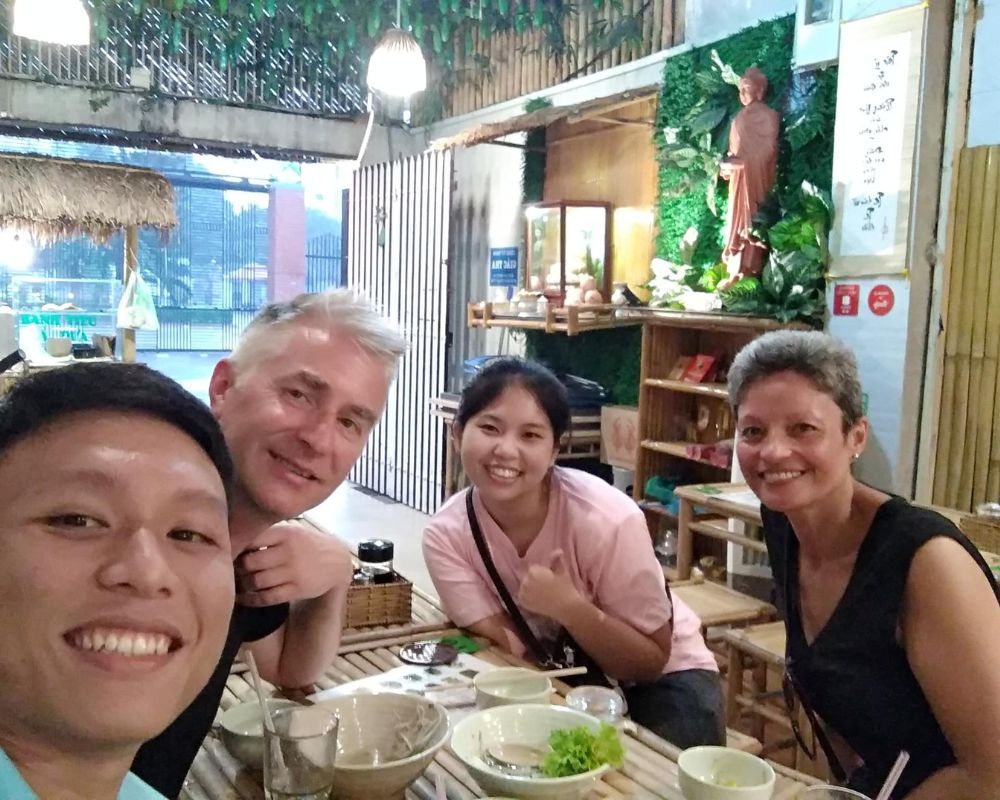
Explore the Hidden Alleyways of Cho Lon
Navigating the labyrinthine lanes of Cho Lon is an element of its allure. In recent years, Hao Sy Phuong Alley has emerged as one of the most frequented tourist destinations in Cho Lon. Situated near Tran Hung Dao Street, the passageway is lined with vibrant residences and structures designed in a fashion distinct from the remainder of Ho Chi Minh City.
Throughout your exploration, you will discern an amalgamation of architectural styles originating from France, China, and Vietnam that have managed to endure Saigon's rapid urbanization. However, the motorbikes, wiring, distinctive design, Chinese street signs, and Cantonese-speaking locals will transport you to Shanghai or Hong Kong in the early 20th century.
Visit Cha Tam Church
- Address: 25 Đ. Học Lạc, Phường 14, Quận 5, Thành phố Hồ Chí Minh
Approximately 7 million Catholics reside in Vietnam, so the presence of a Catholic church in Cho Lon may not come as much of a surprise. Cha Tam Church, located at the terminus of Tran Hung Dao Street, is a relic from the French colonial era and a significant religious emblem for the Catholic community of Hoa. It was constructed in the nineteenth century.
Nestled amid its tranquil grounds is a pagoda in the Chinese style adorned with a cross, which presents Mother Mary in an unparalleled manner. Amid the 1963 South Vietnamese coup d'état, the infamous refuge of the ousted president of South Vietnam, Ngo Dinh Diem, was also situated there. It was evident that his supplications went unanswered as he met his demise the day after.
>>> See more: TOP BEST ROOFTOP BARS IN HO CHI MINH
other
Saigon Opera House is the perfect destination to enjoy interesting performances and explore unique architecture. With the Western European style, tourists feel that you are in poetic Paris without Saigon city. Don't miss out on an opportunity to visit the Opera House when you come to Ho Chi Minh.
Are you looking for a fashion store with affordable price in Ho Chi Minh? 14 Ton That Dam is the perfect choice for you. Vietnam Trust Car Rental offers some fashion stores at 14 Ton That Dam that you refer. Let's explore it.
Enjoying a cup of Vietnamese coffee is an interesting experience when you travel in Vietnam. Ho Chi Minh city is known for its unique cafe culture with many kinds of cafes from traditional to international blends. You can enjoy delicious cafes at coffee shops in Ho Chi Minh city. These shops offer good drinks and stunning virtual living space, allowing many beautiful photos on the social platform. Refer some best view cafe shops in Saigon in this guide.
Are you looking for the best Cu Chi Indian restaurants in Ho Chi Minh After exploring the Cu Chi Tunnel Tour by private car ? Experience the delicious lunch with your family and friends with the top 4 best Cu Chi Indian restaurants in Ho Chi Minh in this guide. Let’s explore it.
Dam Sen Water Park is one of the best things to visit in Ho Chi Minh. Tourists can play together with kids, friends and explore many entertainment activities here. Each year, Dam Sen Water Park welcomes a large number of local and foreign tourists coming to Ho Chi Minh and choosing a destination for visiting.


